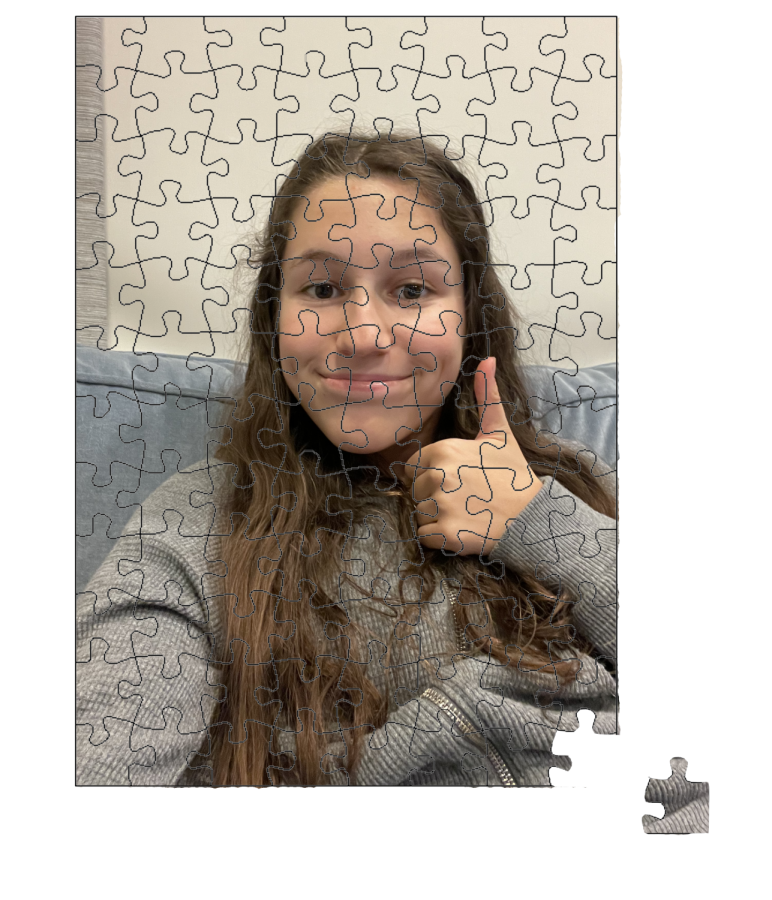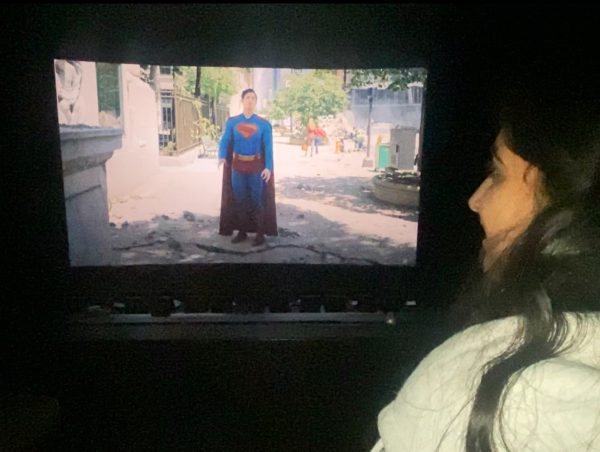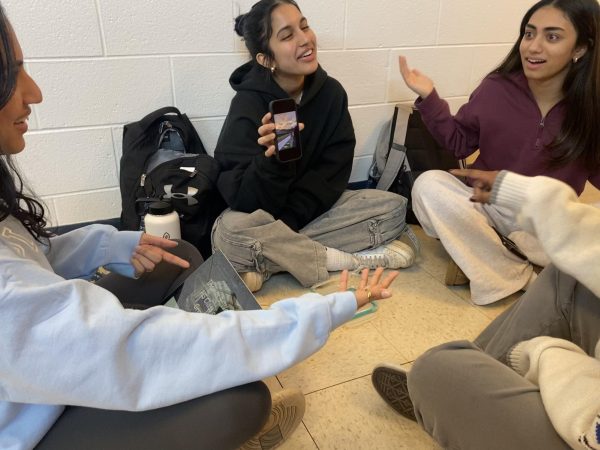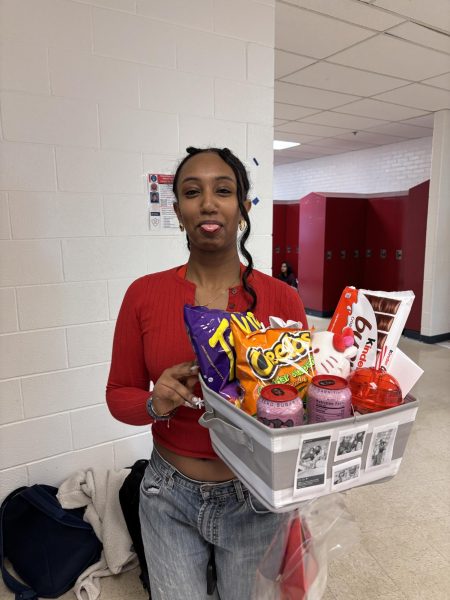Dylan’s piece of the puzzle: jigsaw puzzles
Photo illustration by Dylan Cohen
When working on a jigsaw puzzle, it is best to start with corners and edges. Junior Dylan Cohen made a rookie mistake: When solving her own puzzle, she saved the corners for last.
If you went through quarantine or are a puzzle fanatic like myself, you have probably worked on a jigsaw puzzle. Jigsaw puzzles are physical puzzles that have the goal of completing an image or piece of artwork using a specified number of pieces. Depending on the puzzle, jigsaws can have as few as 25 pieces or as many as 1,000 pieces.
Jigsaw puzzles come in a variety of shapes and sizes that cater to different puzzle makers. Beginners should first work on puzzles with 100 pieces or fewer, with simple shapes such as squares or rectangles. While jigsaw puzzles can have as many as 500,000 pieces in a variety of shapes such as stars, circles, hearts and other forms, the easiest puzzles are those with the fewest number of pieces and those shaped in a square or rectangle. Of course, it comes down to personal preference, but those puzzles tend to be easiest.
If you are a puzzle pro or somebody who enjoys a challenge, finding puzzles with 1,000 or more pieces in unique shapes will be a blast. I like to think of myself as somewhat of a puzzle connoisseur, so I am always on the lookout for puzzles with 1,000 or more pieces and are shaped in a way I have never seen before.
Jigsaw puzzles, when completed, typically display a type of artwork, such as a painting or photograph. The most difficult of jigsaw puzzles will have a large number of pieces that look exactly like one another, leaving it up to the puzzle-maker to figure out how each piece goes together by shape alone. On the contrary, easier puzzles will have more unique pieces, allowing the puzzle-maker to put pieces together by both appearance and shape.
When beginning a puzzle, it is crucial to completely separate all pieces and ensure they are right-side up. While tedious, this allows complete focus on putting pieces together and makes the process of finding specific pieces much easier. It is important to remember that when certain puzzles are first taken out of a box, pieces may be stuck together. I prefer to separate pieces that are stuck together in order to be able to completely solve the puzzle myself, but this is simply a personal preference.
When first putting pieces together, it can be tempting to immediately look for any pieces that match together. When putting edges and corners together, however, the rest of the puzzle will fall into place much more easily.
As one of the most common puzzle types in the world, jigsaw puzzles can be easily found all over the world. I love to find jigsaw puzzles that suit my interests, so I shop on Etsy and eBay to find my favorite puzzles. So far, I found candy puzzles and a Wisconsin stadium puzzle among others.
Your donation will support the student journalists of Thomas S. Wootton High School. Your contribution will allow us to purchase equipment and cover our annual website hosting costs.
Dylan is a 2023 graduate.







